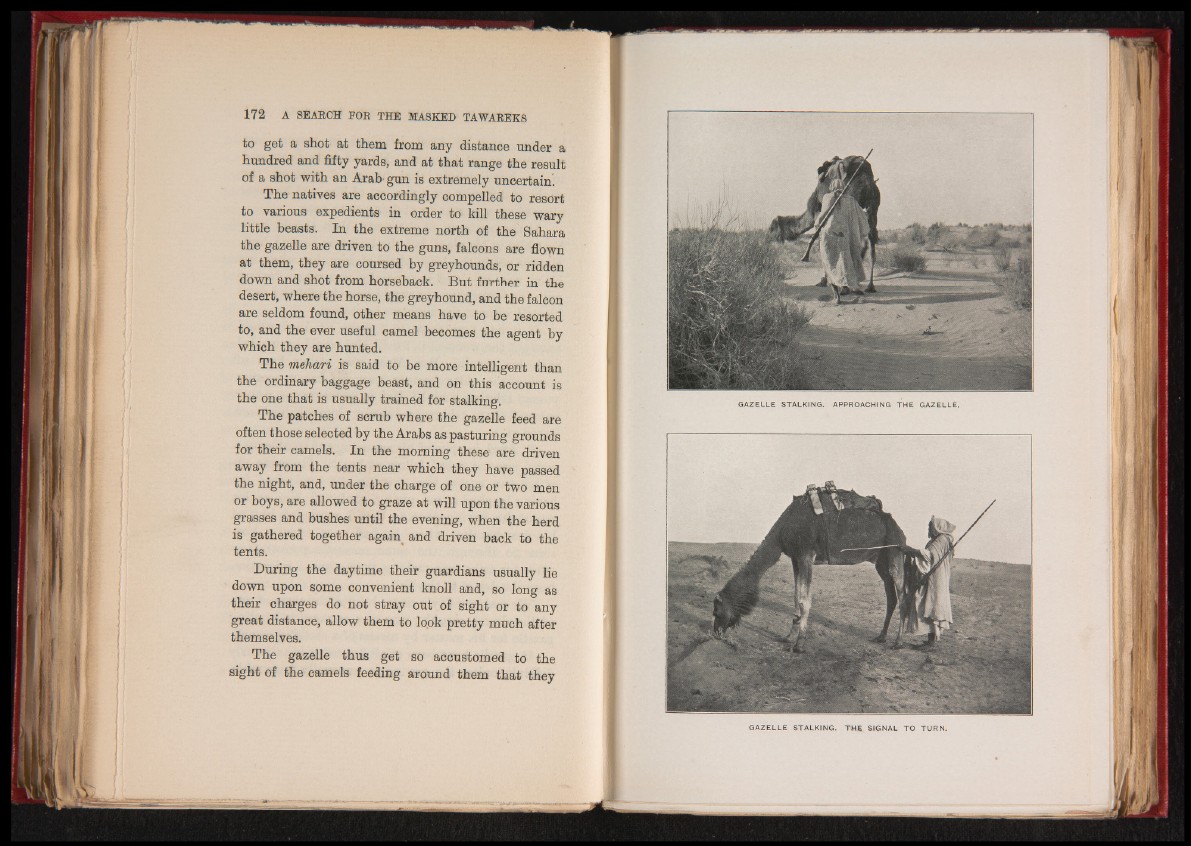
to get a shot at them from any distance under a
hundred and fifty yards, and at that range the result
of a shot with an Arab gun is extremely uncertain
The natives are accordingly compelled to resort
to various expedients in order to kill these wary
little beasts. In the extreme north of the Sahara
the gazelle are driven to the guns, falcons are flown
at them, they are coursed by greyhounds, or ridden
down and shot from horseback. But further in the
desert, where the horse, the greyhound, and the falcon
are seldom found, other means have to be resorted
to, and the ever useful camel becomes the agent by
which they are hunted.
The mehari is said to be more intelligent than
the ordinary baggage beast, and on this account is
the one that is usually trained for stalking.
The patches of scrub where the gazelle feed are
often those selected by the Arabs as pasturing grounds
for their camels. In the morning these are driven
away from the tents near which they have passed
the night, and, under the charge of one or two men
or boys, are allowed to graze at will upon the various
grasses and bushes until the evening, when the herd
is gathered together again and driven back to the
tents.
During the daytime their guardians usually lie
down upon some convenient knoll and, so long as
their charges do not stray out of sight or to any
great distance, allow them to look pretty much after
themselves.
The gazelle thus get so accustomed to the
sight of the camels feeding around them that they